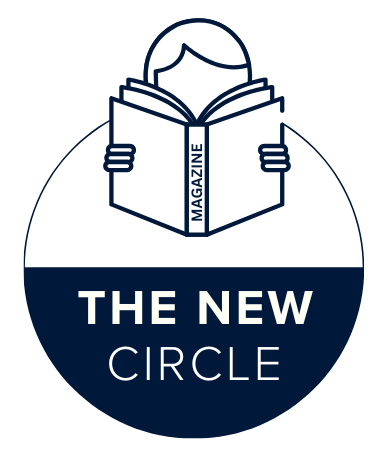Imagine a high school student in Chicago. For her capstone project on sustainable urban design, she isn’t just reading textbooks; she’s using VR to walk the streets of Singapore and Copenhagen, collaborating in real-time with student peers there via a cloud-based platform. Her team’s work is analyzed by an AI that curates personalized research materials, while her teacher acts as a mentor, guiding her to ask better questions rather than dispensing predetermined answers. This isn’t a distant sci-fi fantasy. It is the tangible, necessary future of education, a paradigm known as Classroom 30X. For K-12 and Higher Education administrators, this model represents more than a technological upgrade—it is the strategic imperative for closing the growing chasm between traditional pedagogy and the fluid, complex demands of the global workforce. By the end of this article, you will not only understand the core components of Classroom 30X but will also possess a practical, three-pillar framework to begin its strategic implementation within your institution.
Deconstructing Classroom 30X: Beyond the Digital Upgrade
Many institutions are still grappling with the shift from the analog Classroom 1.0 to the digitally supplemented Classroom 2.0, characterized by SMART Boards and learning management systems. Classroom 30X is the next exponential leap. It is a holistic framework where technology, pedagogy, and space design converge to create a dynamic, globally connected, and deeply personalized learning ecosystem. This is the true essence of digital transformation in learning, moving beyond simply using tools to fundamentally re-architecting the educational experience.
The Core Philosophy: Shifting from Instruction to Co-Creation
At its heart, Classroom 30X is a philosophical shift. It moves the educator from the “sage on the stage” to the “guide on the side,” and ultimately, to a “co-creator in the process.” The primary goal is no longer the efficient transfer of static information. Instead, the focus is on fostering student agency, interdisciplinary inquiry, and the co-creation of knowledge. This model prioritizes project-based learning that mirrors real-world challenges, demanding that students exercise critical thinking, complex problem-solving, and emotional intelligence. The curriculum becomes a living entity, adaptable and responsive to student inquiry and global contexts.
Defining the “X” Factor: The Role of Exponential Technologies
The “X” in Classroom 30X signifies the exponential impact of emerging technologies. This is not about adding more tablets to the classroom; it’s about integrating systems that fundamentally change what is possible.
- Personalized Learning at Scale: Artificial Intelligence (AI) and Machine Learning (ML) power adaptive learning platforms that analyze a student’s progress in real-time, tailoring content to their precise zone of proximal development and providing educators with deep, actionable insights.
- Immersive Environments: Augmented and Virtual Reality (AR/VR) transform abstract concepts into tangible experiences. Imagine a biology student navigating a human bloodstream or a history student witnessing the construction of ancient Rome, making learning an embodied, unforgettable process.
- The Power of Data: Unified data systems break down information silos, providing a 360-degree view of student progress. This allows for strategic interventions at both the individual and programmatic levels, turning intuition-based decisions into data-informed ones.
The Collaborative and Global Mandate
Classroom 30X shatters the physical and geographical walls of the traditional classroom. The global classroom is a core tenet, where students regularly engage in projects with peers from different cultures and time zones. Digital collaboration tools—from sophisticated video conferencing to shared digital workspaces—make this seamless. This constant exposure to diverse perspectives is the most effective training ground for developing the cross-cultural competencies required in today’s—and tomorrow’s—workforce.
The Three Strategic Pillars for Classroom 30X Implementation
Understanding the model is one thing; implementing it is another. A successful transition requires a deliberate EdTech strategy built on three interdependent pillars.
Pillar 1: Infrastructure and Technology Readiness
A visionary pedagogical model cannot run on outdated infrastructure. This pillar involves a meticulous audit and strategic investment in:
- Robust, Scalable Platforms: Cloud-based Learning Management Systems (LMS) and Learning Experience Platforms (LXP) that can handle high-bandwidth, global collaboration are non-negotiable.
- Security and Privacy: With increased data flow and international data sharing, a rigorous cybersecurity and student data privacy framework is paramount.
- Phased Hardware Deployment: A strategic, phased plan—starting with foundational 1:1 device programs and gradually incorporating specialized tech like VR labs and IoT sensors—ensures sustainability and maximizes ROI.
Pillar 2: Evolving Pedagogy and Educator Empowerment
Technology is futile without a corresponding evolution in teaching practice. This is the human core of Pedagogy 3.0. Professional development must focus on “unlearning” traditional, teacher-centric methods. Administrators must invest in:
- Continuous Coaching: Move beyond one-off workshops to ongoing coaching that supports educators as they experiment with facilitation and project-based learning.
- Communities of Practice: Create formal and informal spaces where teachers can share successes, dissect failures, and collaboratively build a repository of Classroom 30X lesson plans.
- Redefining Educator Effectiveness: Develop new frameworks for teacher evaluation that value facilitation, mentorship, and the ability to cultivate student curiosity over standardized test scores.
Pillar 3: Curricular Alignment and Flexibility
The curriculum must be as agile and adaptive as the technology and teaching methods. A rigid, century-old syllabus is the antithesis of Classroom 30X.
- Cross-Cultural Competencies: Weave global citizenship, empathy, and digital communication skills explicitly into learning outcomes across all subjects.
- Flexible Learning Pathways: Allow students to pursue interdisciplinary passions through micro-credentials, badge systems, and personalized learning journeys that blend academic subjects with real-world projects.
- Authentic Assessment: Replace high-stakes standardized tests with portfolio-based assessments, where students demonstrate their learning through projects, creations, and solutions to authentic problems.
Measuring Success: Student Outcomes in the Classroom 30X Era
The ultimate justification for this significant undertaking lies in its impact on students. How do we measure the success of this new model?
Quantifiable Improvements in Engagement and Retention
Success metrics shift from mere test scores to deeper indicators of student investment. Track metrics like:
- Student Agency: Are students taking more ownership of their learning goals?
- Intrinsic Motivation: Are they pursuing knowledge beyond the requirements of the curriculum?
- Reduction in Drop-out Rates: Early adopters of personalized learning models often report significant decreases in failure rates, as students are no longer left behind by a one-size-fits-all pace.
Preparing a Global, Future-Ready Workforce
The long-term value is in producing graduates who are not just knowledgeable, but adaptable, resilient, and collaborative. Students from a Classroom 30X environment naturally excel in the ambiguous, team-oriented settings that define modern companies. They enter higher education and the workforce already proficient in the very skills—digital literacy, complex communication, and global awareness—that industries desperately seek. This is the definitive return on investment: producing the innovators and leaders of tomorrow.
Conclusion
The transition to Classroom 30X is not a question of “if” but “when.” The gap between traditional education and the real world is widening at an exponential rate. This model provides the blueprint to not only close that gap but to create a learning environment that is more engaging, equitable, and effective. The journey requires more than a budget line for gadgets; it demands a fundamental rethinking of infrastructure, pedagogy, and curriculum. The difference will be between those institutions that lead the future of education and those that are left behind. Your call to action is clear: convene a multi-stakeholder Classroom 30X task force this month. Begin the critical work of auditing your current state and developing a strategic digital roadmap. The future of your students, and the relevance of your institution, depends on the steps you take now.
YOU MAY ALSO LIKE: How Online Education Is Shaping the Future of Teaching

